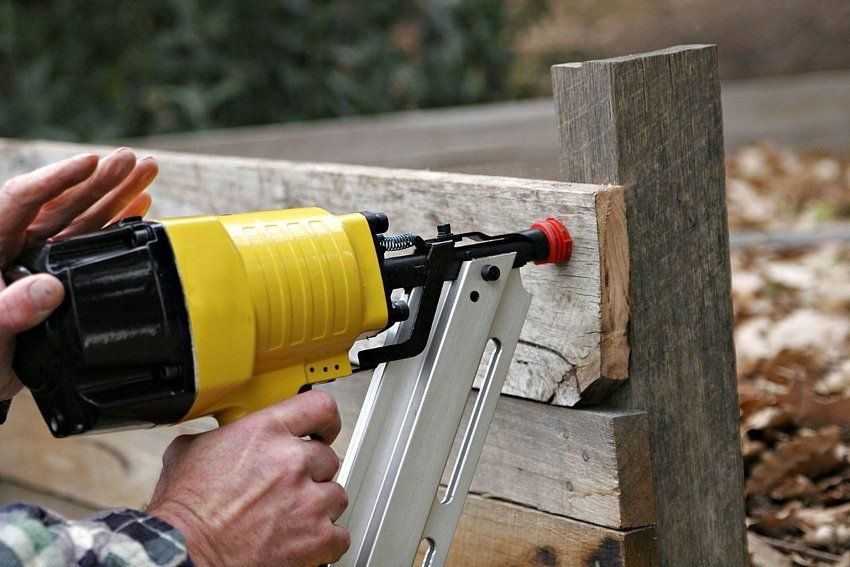January 15, 2018
If you are an experienced user or just learning how to use a pneumatic nailer, it's best to know the safety issues that surround using this powerful tool. The safety rules are easy to follow and most importantly include wearing eye protection to eliminate the chance of accidents happening while on the job. If you follow these simple rules, your rental experience with the nailer should be a safe one!
1. Read the Manual Even if you know how to use a pneumatic nailer from previous experience, it is best to read the manual to make sure you know how to handle, load, and operate one of these tools.
2. Always Wear Safety Glasses No matter your size or strength, your eyes are vulnerable to permanent damage from flying nails or other debris. Make sure to also wear hard hats and hearing protection to protect your ears from the constant trigger of the nails.
3. Keep Your Finger Off the Trigger Many worksite accidents occur when the tool is carried around with the trigger depressed. Since the trigger is one part of a two-part system, all you need to do is depress the workpiece to a point of contact to discharge a nail. Instead, if you need to move around or clear a jam, disconnect the air supply and save yourself or someone close to you a near fatal injury.
4. Use Regulated, Compressed Air This may seem like common sense but variations have been made in the past! Make sure that you only use air that is regulated and compressed. You also should not exceed the recommended air pressure capacity for the tool.
5. Keep Hands and Feet Away From the Fastening Area If you are driving a 3-1/2"-long nail into a piece of wood, your hand should be nowhere within 3-1/2" radius, at the least. Knots, splits, or grain structure of the wood can cause the nail to shift, possibly even out of the wood. Here's a tip on how to figure a safe distance. Multiply the fastener length by at least 2, and then use that as the minimum distance you and your body should be from the point of nail entry.
6. Operate the Tool on the Work Surface Don't squeeze the trigger unless the tool's nosepiece is completely on the surface of the material that you are working on fastening. Remember never to drive a fastener into a piece of wood too close to the edge in case the wood chips or deflects off the board. Also, make sure not to hold the tool even at a slight angle, in case the nail breaks through and deflects into the air.
7. Disconnect the Air Supply Before Servicing Tool Always disconnect the air supply before removing a jam or fixing another malfunction. The fastener will be waiting to disengage as soon as the problem is fixed and will nail into anything in the path...including body parts if not handled safely.
8. Check Tool for Proper Operation Check the tool manual or ask the rental center for basic instructions on how to perform a quick check. Stop using the tool if the safety gets stuck or if the tool begins to malfunction. The loss of one part in a two-part operating system is a critical problem that could lead to injury. Make sure to report any malfunctioning to your rental center.
All Rights Reserved | True Value Taylor Rental Leominster, MA
Website Design & Maintenance by Kreative Dezign Studio
All Rights Reserved | True Value Taylor Rental Leominster, MA
Website Design & Maintenance by Kreative Dezign Studio










